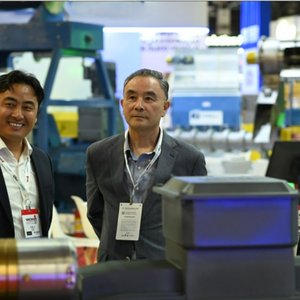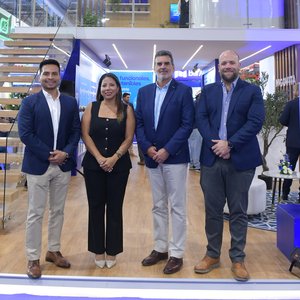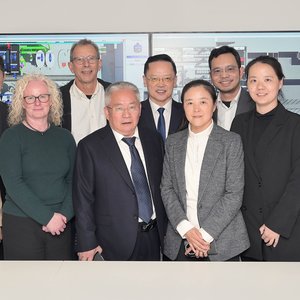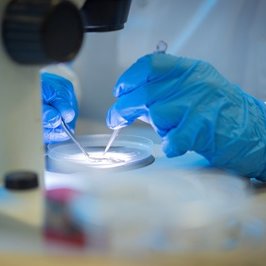The story of shrimp farming often begins with ponds, water, and feed, but the real story is written in the microscopic world. Bacteria recycle waste, plankton respond, and stabilize the environment, and shrimp live within this delicate balance. Speaking at FARM 2025 in Jakarta, Dr. Yuni Puji Hastuti from IPB University and an expert in Panca Sukses Lestari, shared her research on how microbial harmony plays a vital role in advancing sustainable aquaculture.
Every shrimp pond is a living ecosystem where shrimp, bacteria, and plankton interact continuously. If farmers can nurture balance within this system, they can secure stable water quality, healthier shrimp, and better harvests. If balance is lost, diseases emerge, survival rates fall, and the sustainability of the farm is threatened.
Shrimp farming usually begins with pond preparation, water conditioning, stocking post-larvae, and feeding. However, uneaten feed and metabolic waste from shrimp settle in the pond, creating organic matter that fuels bacterial growth and activities. These bacteria are not all the same. Some oxidize compounds, others ferment them, and their combined activities release chemical products. "These products then feed plankton, which form the base of the food chain, ultimately influencing shrimp health," Dr. Yuni said.
Stressed that bacteria are not just threats to be eliminated. They are workers in the pond, breaking down waste and recycling nutrients. Even Vibrio, often seen only as a pathogen, plays a role in nitrogen cycling. It can convert nitrates into forms usable by other organisms. The challenge, therefore, is not to eradicate bacteria but to guide microbial communities into balance.
The nitrogen cycle, she explained, is central to this balance. Ammonia accumulates when shrimp excrete waste or when feed is left uneaten. If unchecked, high ammonia levels stimulate harmful plankton blooms and stress shrimp. Specialized bacteria can transform ammonia into nitrites and then into nitrates, which are far less toxic and even beneficial. Denitrifying bacteria can then complete the cycle by releasing nitrogen gas back into the atmosphere. These processes are the pond’s natural cleaning system. When they function properly, ponds remain stable. When they break down, toxicity builds, and shrimp health declines.
Lessons from field applications
To make these ideas concrete, Dr. Yuni shared insights from field studies in different regions. In Banyuwangi, ponds were dominated by Bacteroidetes bacteria. Initially, this seemed safe, but the unchecked growth of one group disrupted the microbial balance, leading to stress and disease in shrimp. In Bengkulu, however, microbial diversity and specific activities of nitrification were high, and denitrification processes were active. These ponds remained resilient, with stable water conditions and better shrimp survival.
Such findings underscored her key message: diversity is strength. Ponds dominated by one type of microbe are vulnerable, while those with many species interacting remain stable. This is why monitoring microbial diversity is important.
Dr. Yuni advised farmers to avoid unstable liquid microbial products, which are sensitive to temperature and oxygen fluctuations. Solid forms, she explained, offer more stability and effectiveness. She also highlighted the importance of reading and interpreting data. Farmers who monitor pond conditions daily (ammonia levels, nitrite concentrations, plankton diversity) can make small adjustments before problems escalate.
Technology is helping to make this possible. Her team has collected and digitized data from shrimp ponds across Indonesia. With cloud-based systems, farm owners in Jakarta can check pond conditions in Sumbawa from their mobile phones. The next frontier, she explained, is integrating artificial intelligence to interpret these data and provide recommendations. Instead of relying on trial and error, farmers will be able to act based on real-time insights.
The benefits are already visible. Farms applying balanced microbial management have reported survival rates 10% higher than conventional systems. Total harvests are more than 7% greater. More importantly, ponds remain stable under environmental stress, with fewer disease outbreaks. These improvements are not just numbers; they represent stronger livelihoods for farmers and greater resilience for the aquaculture industry.
More sustainable future
Knowledge is the most powerful tool. Technology, data, and microbial products are valuable, but their effectiveness depends on farmers and technicians understanding how to use them. Being able to interpret water quality data, recognize microbial trends, and connect them to pond management is what truly makes the difference.
For Dr. Yuni, the future of shrimp aquaculture lies in merging ecological understanding with digital innovation monitoring. Microbial balance will remain the foundation, while smart systems will enhance decision-making. In this vision, farmers are not fighting against nature but collaborating with it, using bacteria and plankton as allies rather than adversaries.
"Every farmer already has the best reference material available, their own ponds," she said. By closely observing, recording changes, and learning from outcomes, farmers can generate knowledge that surpasses any textbook. In doing so, they become not just producers of shrimp but stewards of ecosystems.
This perspective redefines the role of shrimp farmers in Indonesia and beyond. They are not merely producers, but guardians of microbial balance, managers of nutrient cycles, and stewards of entire ecosystems. With this mindset, the industry can move beyond crisis-driven management toward stability, sustainability, and growth.
Read more about FARM 2025:
FARM 2025: Building the future of shrimp together
Smarter shrimp feed management for maximizing performance
Safeguarding shrimp farming through smarter biosecurity
Antibiotics in shrimp farming and the search for safer alternatives









